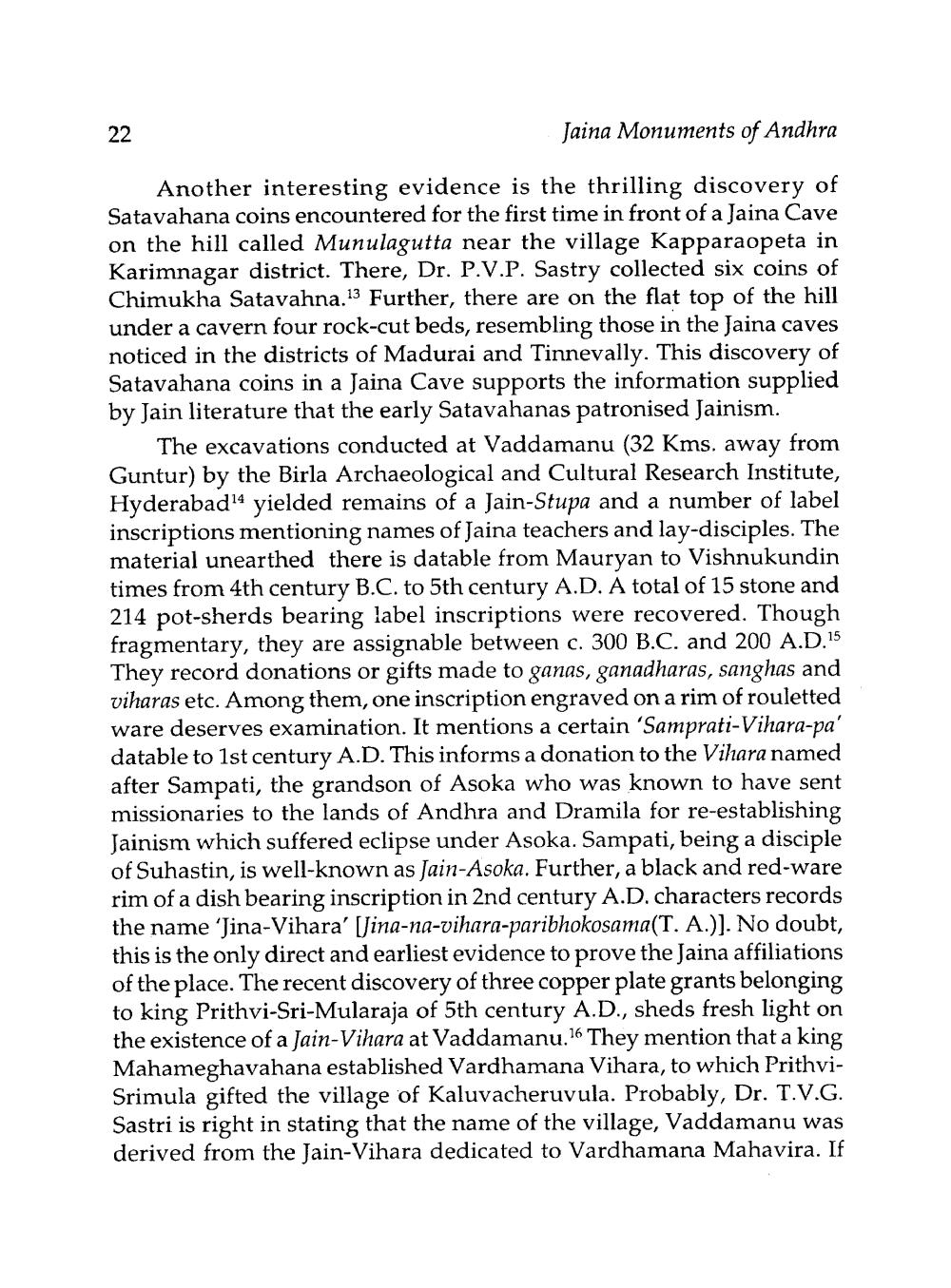________________
Jaina Monuments of Andhra
Another interesting evidence is the thrilling discovery of Satavahana coins encountered for the first time in front of a Jaina Cave on the hill called Munulagutta near the village Kapparaopeta in Karimnagar district. There, Dr. P.V.P. Sastry collected six coins of Chimukha Satavahna.13 Further, there are on the flat top of the hill under a cavern four rock-cut beds, resembling those in the Jaina caves noticed in the districts of Madurai and Tinnevally. This discovery of Satavahana coins in a Jaina Cave supports the information supplied by Jain literature that the early Satavahanas patronised Jainism.
The excavations conducted at Vaddamanu (32 Kms. away from Guntur) by the Birla Archaeological and Cultural Research Institute, Hyderabad14 yielded remains of a Jain-Stupa and a number of label inscriptions mentioning names of Jaina teachers and lay-disciples. The material unearthed there is datable from Mauryan to Vishnukundin times from 4th century B.C. to 5th century A.D. A total of 15 stone and 214 pot-sherds bearing label inscriptions were recovered. Th fragmentary, they are assignable between c. 300 B.C. and 200 A.D.15 They record donations or gifts made to ganas, ganadharas, sanghas and viharas etc. Among them, one inscription engraved on a rim of rouletted ware deserves examination. It mentions a certain 'Samprati-Vihara-pa' datable to 1st century A.D. This informs a donation to the Vihara named after Sampati, the grandson of Asoka who was known to have sent missionaries to the lands of Andhra and Dramila for re-establishing Jainism which suffered eclipse under Asoka. Sampati, being a disciple of Suhastin, is well-known as Jain-Asoka. Further, a black and red-ware rim of a dish bearing inscription in 2nd century A.D. characters records the name 'Jina-Vihara' (Jina-na-vihara-paribhokosama(T. A.)). No doubt, this is the only direct and earliest evidence to prove the Jaina affiliations of the place. The recent discovery of three copper plate grants belonging to king Prithvi-Sri-Mularaja of 5th century A.D., sheds fresh light on the existence of a Jain-Vihara at Vaddamanu.16 They mention that a king Mahameghavahana established Vardhamana Vihara, to which PrithviSrimula gifted the village of Kaluvacheruvula. Probably, Dr. T.V.G. Sastri is right in stating that the name of the village, Vaddamanu was derived from the Jain-Vihara dedicated to Vardhamana Mahavira. If




